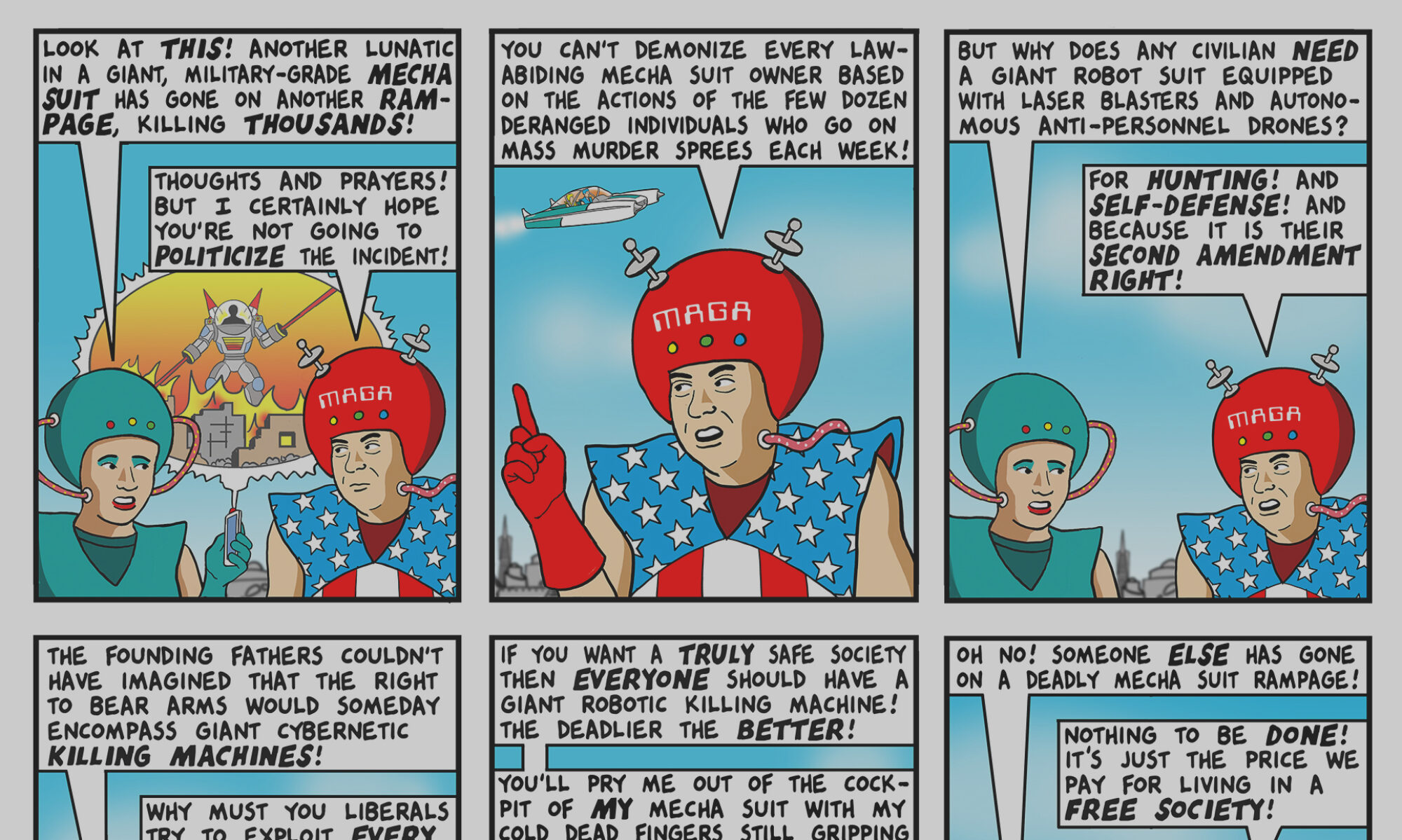William Safire’s name has been coming up a lot on the blogs I read lately, and it reminded me of something I’ve been meaning to go back and look up. (Fortunately I have some access to the Lexis-Nexis database. Unfortunately there’s no way to link directly to the Safire columns I quote below, so if you need to see the full columns for yourself, you’ll either have to pay the New York Times a couple bucks or go to your local library.)
As you certainly remember, President Bush spent much of 9/11 in search of a safe place to hide — which elicited a critical response from William Safire in his September 12, 2001 column:
Did our national leadership respond well in the first hours of crisis, when nobody knew what would follow the devastation in New York and the attack in Washington?
Stopping air and rail transportation was necessary, and blocking access to national monuments and federal offices was prudent. New York’s governor and mayor did their duty by sticking to their posts and reassuring their fellow New Yorkers live on television, recalling King George VI during London’s blitz.
But the Secret Service took full charge of President Bush, who was in Florida, running him secretly around the country making a nervous tape. Even in the first horrified moments, this was never seen as a nuclear attack by a foreign power. Bush should have insisted on coming right back to the Washington area, broadcasting — live and calm — from some secure facility not far from the White House.
However, after this column appeared, someone from the White House clearly took Safire out to the woodshed and gave him a dressing down, because the next day he quickly adopted the party line:
A threatening message received by the Secret Service was relayed to the agents with the president that “Air Force One is next.” According to the high official, American code words were used showing a knowledge of procedures that made the threat credible.
(I have a second, on-the-record source about that: Karl Rove, the president’s senior adviser, tells me: “When the president said ‘I don’t want some tinhorn terrorists keeping me out of Washington,’ the Secret Service informed him that the threat contained language that was evidence that the terrorists had knowledge of his procedures and whereabouts. In light of the specific and credible threat, it was decided to get airborne with a fighter escort.”)
— snip —
“It would have been irresponsible of him to come back, pounding his chest,” says my source, “when hostile aircraft may have been headed our way. Any suggestion that he should have done so is ludicrous.”
Confession: I made just that suggestion in yesterday’s column, which stimulated two set-it-straight calls. Why didn’t the V.P. make an appearance during that long afternoon in Bush’s stead? The official reason is that Cheney was busy in the basement; the real reason, I think, is that he was unduly concerned it would appear presumptuous.
The most worrisome aspect of these revelations has to do with the credibility of the “Air Force One is next” message. It is described clearly as a threat, not a friendly warning — but if so, why would the terrorists send the message? More to the point, how did they get the code-word information and transponder know-how that established their mala fides?
That knowledge of code words and presidential whereabouts and possession of secret procedures indicates that the terrorists may have a mole in the White House — that, or informants in the Secret Service, F.B.I., F.A.A. or C.I.A. If so, the first thing our war on terror needs is an Angleton-type counterspy.
Now, it quickly became clear that there was no threat to Air Force One that day, no mole in the White House, no terrorists with knowledge of secret codes. So certainly William Safire wrote a third column, setting the record straight, right?
Well, not as far as I can tell. I should insert a quick caveat here — I am not an expert Lexis researcher, and it is possible that I am missing something — but a search of Safire’s columns from September 11, 2001 to the present day, using various combinations of keywords such as “Air Force One,” “mole,” and “Bush” returns… nothing. Zip, zilch, nada. In other words, as best I can determine, Safire used his column on September 13, 2001, to disseminate the Rove-inspired, blatantly false story that terrorists had access to secret Air Force One code words and the President was in immediate danger — and then never mentioned the story again. And — again, unless I’m missing the column in which he expressed regret for allowing the White House to use him like a common garden implement — that should probably tell you all you need to know about Safire.
